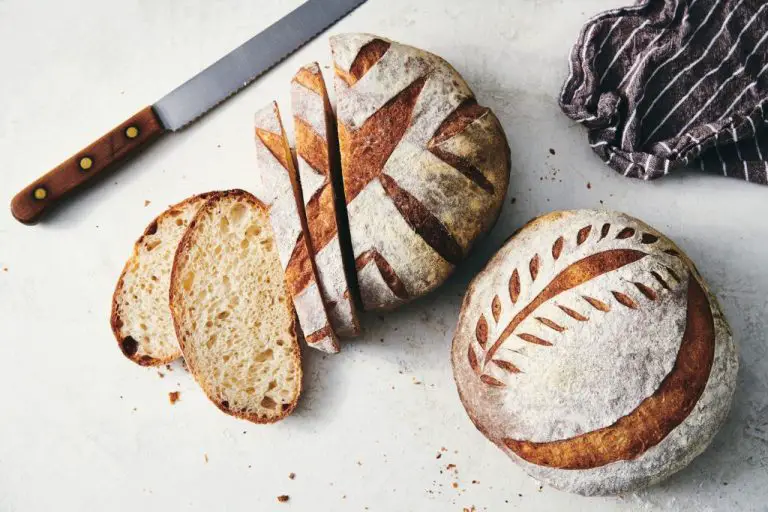What Is The Best Stain To Stain Wood?
Wood staining is the process of changing the color and adding protection to wood surfaces using a stain or sealant product. Staining wood has several benefits compared to leaving wood in its raw state:
Makes wood more water-resistant – Stains contain oils, resins, and pigments that penetrate into the wood and protect it from moisture damage. Untreated wood can warp, crack and rot when exposed to the elements. (https://www.doityourself.com/stry/why-stain-wood-4-reasons-to-use-exterior-wood-stain)
Enhances and evens out the natural appearance – Stains allow you to alter the natural tone and grain pattern of wood to achieve a more uniform, rich color. They highlight the beauty of wood grain. (https://www.heartwoodcarving.com/the-top-benefits-of-staining-wood-yourself)
Protects against UV damage – The pigments in stains help block out harmful UV rays that can fade and deteriorate wood over time. This prevents graying and sun damage. (https://www.quora.com/What-are-the-benefits-of-staining-wood)
Adds character and visual interest – From transparent natural tones to opaque, vibrant hues, stains allow for endless design possibilities to complement any style. Stained wood has greater depth compared to painted wood.
In summary, wood stains enhance the grain while protecting wood from weathering and moisture damage. They help wood objects last longer while also providing decorative color options.
Types of Wood Stains
There are several main types of wood stains to choose from:
Oil-based stains contain pigment suspended in an oil carrier, usually linseed oil or tung oil. They deeply penetrate into the wood grain to bring out richness and patina. Oil-based stains are ideal for exterior applications since the oil helps protect against UV rays and moisture. However, they require mineral spirits for cleanup and take longer to dry than other stain types.[1]
Water-based stains use water as the pigment carrier and cleanup is soap and water. They dry faster than oil-based but don’t penetrate as deeply into the wood. Water-based stains are a good choice for indoor furniture and children’s projects. However, moisture resistance is lower so they’re less suitable for outdoor use.[2]
Gel stains have a thicker, gel-like consistency that sits more on the surface rather than absorbing deep into pores. The color remains vibrant but can be more prone to scratching or wearing off over time. Gel stains work well for vertical surfaces and intricate wood details.
Opaque stains contain higher pigment levels to fully block the wood grain. This creates a solid colored look on the surface rather than a transparent stained effect.
Choosing the Right Stain
When choosing a stain for a wood project, there are several factors to consider:
Wood Type – Different woods take stain differently. For example, oak tends to be very porous and absorbs more stain, while maple is tighter grained and absorbs less. Test stains on a scrap piece of wood first to see how it will look. Softwoods like pine generally require a wood conditioner before staining.[1]

Color – Consider the natural color of the wood and whether you want the stain to enhance or change the existing tone. For dramatic color changes, use a wood primer before the stain. Also think about how the stained wood will coordinate with other colors in the space.
Finish – Stains come in basic finish types like penetrating, wiping, gel, and spray. Penetrating stains soak into the wood for a natural look. Wiping stains are applied with a rag for more control over color. Gel stains go on thick for deeper color. Sprays are the easiest to apply evenly.[2]
Test samples on scrap wood to see how the stain adheres and looks when fully cured. Consider the planned use of the wood project and durability needed when selecting a stain.
Preparing the Wood
Proper preparation is crucial for achieving an even, consistent wood stain. The preparation process involves sanding, cleaning, and conditioning the wood.
Sanding smooths the wood surface and opens up the pores to allow the stain to penetrate. Start with a coarse grit sandpaper like 80-100 to remove any existing finish or flaws. Then progress with finer 120-150 grit sandpaper to smooth everything out (source: Home Depot). Always sand with the grain.
After sanding, wipe away any lingering dust using a dry cloth or tack cloth. Make sure the surface is completely clean before applying stain.
Some woods like pine have a waxy resin that can inhibit stain absorption. Use a chemical wood conditioner before staining to prevent blotchiness and uneven coloring. Let the conditioner fully soak in following the product directions (source: WikiHow).
Stain Application
There are three main methods for applying wood stain:
Brushing
Brushing is the most common method for applying wood stain. Use a high-quality natural bristle brush to fully coat the wood’s surface. Apply stain liberally and work it into the grain using smooth, even strokes. Let the stain penetrate for 3-5 minutes then wipe off any excess with a clean lint-free cloth before it dries. When brushing stain, maintain a wet edge and work from board to board to ensure an even appearance.
Wiping
Wiping stain directly onto the wood with a clean cloth or rag allows for maximum control over the color depth. Dip the cloth into the stain and wipe it onto the surface using smooth, straight strokes following the direction of the grain. Remove any excess stain with a new clean cloth. The wiping method works well for stained wood projects like furniture. It prevents blotchiness and allows you to gradually build up the desired stain color.
Spraying
Using a paint sprayer or HVLP spray system is the fastest way to apply stain over large surface areas. Hold the sprayer 6-8 inches from the wood and apply an even, light coat. Avoid runs or drips. Let the stain sit for a few minutes before wiping up any excess with a clean cloth. Spraying works well for exterior siding, fences, and decking. Apply multiple thin coats for best results.
Proper stain application techniques like brushing across the wood grain, maintaining a wet edge, and wiping away excess stain will allow the wood’s natural beauty to shine through.
Curing and Drying
The amount of time it takes for wood stain to fully cure and dry depends on several factors.
In general, oil-based stains take longer to dry than water-based stains. Oil-based stains usually require 24-72 hours drying time between coats, while water-based stains only need 2-3 hours between coats [1].
The curing process also varies by stain type. Oil-based stains cure by oxidation and evaporation, which is why they require longer dry times. Water-based stains cure through coalescence, where the microscopic polymer particles fuse together as the water evaporates [2].
Other factors impacting dry time include temperature, humidity, ventilation, wood type, and number of coats. Stain will dry fastest in warm, dry conditions with good airflow. Hardwoods like oak and maple generally dry quicker than softwoods like pine and cedar.
It’s important to follow the manufacturer’s recommended recoat times between stain coats. Rushing the process can lead to tacky stain, poor adhesion, and an uneven finish.
Sealing and Topcoating
After staining, it’s crucial to seal and protect the wood with a clear topcoat. This helps the stain last longer, prevents fading from UV rays, and creates a protective barrier against moisture, spills, and abrasion.
There are several good options for topcoats over wood stain:
- Polyurethane – This is a popular water-based or oil-based clear coat that provides good durability and protection for stained wood. Polyurethane creates a hard, plastic-like finish.
- Varnish – Traditional varnish forms a glossy, transparent film over stained wood. Oil-based varnishes offer good moisture resistance. Water-based varnishes go on easily but may require more coats.
- Tung oil – Tung oil penetrates wood pores to provide a natural, subtle sheen. It offers protection against moisture and spills. Reapply frequently for best results.
- Danish oil – This blend of oils and varnish provides a protective, low-luster sheen. It’s easy to apply but will require renewal coats over time.
Always follow the manufacturer’s directions for proper application and drying time. Apply at least 2-3 coats for a durable finish. Sand lightly between coats to ensure proper adhesion. Topcoats enhance and protect stained wood’s beauty.
Stain Brands
Some of the most popular and highest quality wood stain brands include Minwax, Varathane, General Finishes, Cabot, Behr, and Old Masters.
Minwax is one of the most recognizable and widely available wood stain brands. They offer oil-based and water-based stains in a variety of opacities and colors. Many woodworkers swear by Minwax for their dependability and quality.
Varathane is another leading brand that produces premium oil-based and water-based wood stains. They are known for their deep penetration into wood and clarity of color. Varathane is ideal for interior wood projects.
General Finishes focuses on water-based stains and dyes. Their products provide rich, consistent color without obscuring the wood grain. General Finishes is a favorite for staining furniture and cabinetry.
When choosing among top stain brands like these, consider the type of project, desired color and finish, and your personal preferences. Testing different stains on scrap wood can help you determine the right brand and product for your needs.
Stain Maintenance
Properly maintaining stained wood is crucial for keeping it looking beautiful over time. Here are some tips for caring for stained wood:
Regular cleaning is important. Use a soft cloth to gently wipe away any dirt or dust. You can use a damp cloth or a tack cloth to pick up dust without liquids. Avoid abrasive cleaners or scrubbing pads which can damage the stain. Vacuuming with a soft brush attachment can also help keep stained wood clean.
Inspect stained pieces periodically for any signs of wear, fading, or damage. If the color starts looking dull or worn, you may need to reapply stain in affected areas. Spot stain as needed to renew color and finish. When reapplying, sand lightly to help the new stain adhere.
Avoid exposing stained wood to excessive moisture or sunlight, which can cause the stain to deteriorate faster. Consider using furniture covers or moving stained pieces away from windows if needed. High humidity areas can also impact wood stains over time.
Proper stain maintenance will help your stained wood retain its beauty for many years. With routine cleaning and spot treatments as needed, you can keep your stained wood looking rich and vibrant.
Conclusion
Staining wood can greatly enhance the beauty and durability of your wood projects. The key is choosing the right stain for the type of wood, properly preparing the wood, applying the stain correctly, and sealing/topcoating the wood after staining. Oil-based stains tend to be the most durable and provide the richest color, while water-based stains are the easiest to apply. Make sure to properly clean and sand the wood before applying stain. Use a prestain conditioner for soft or porous woods. Apply the stain in the direction of the wood grain using a rag, brush or sprayer in thin, even coats. Let the stain cure fully before sealing or topcoating. With the right preparatory steps and application techniques, you can achieve beautiful, long-lasting stained wood finishes.





